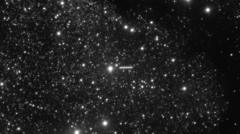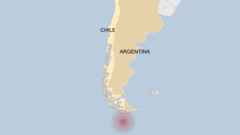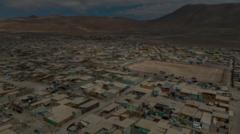A newly discovered interstellar object named 3I/Atlas has emerged, potentially marking the oldest comet known to humanity. Recent studies from Oxford University suggest this cosmic phenomenon could be over three billion years older than our own solar system, positioning it as an extraordinary find in the realm of astronomy. This crucial discovery was unveiled during a presentation at the Royal Astronomical Society's national meeting held in Durham, England.
Astronomer Matthew Hopkins, who made this finding post his PhD studies, expressed excitement over the discovery. Estimates suggest that 3I/Atlas may be more than seven billion years old, potentially making it the most significant interstellar visitor observed to date. The object was first identified on July 1, 2025, by the ATLAS survey telescope in Chile, located approximately 670 million kilometers from the Sun. Since its identification, the global astronomical community has been engaged in efforts to deepen insights into its origin and trajectory.
Hopkins theorizes that 3I/Atlas likely hails from the Milky Way's 'thick disk', an area characterized by a multitude of ancient stars orbiting in a distinctive formation around the Sun. This ancient comet is postulated to contain substantial amounts of water ice, which, as it approaches the Sun later this year, will likely vaporize, creating a visible tail of dust and gas.
Professor Chris Lintott, a co-author of the study, emphasized the groundbreaking nature of viewing an object from an unexplored segment of the galaxy. Researchers believe there is a strong possibility—around two-thirds—that this comet predates the solar system, providing insight into the composition and evolution of celestial bodies.
In terms of visibility, 3I/Atlas is expected to be observable from Earth with amateur telescopes as it nears the Sun, promising an exceptional viewing opportunity for both scientists and astronomy enthusiasts alike. The excitement surrounding 3I/Atlas is heightened by the anticipation of the upcoming Vera C Rubin telescope in Chile, projected to survey the southern hemisphere more thoroughly and potentially discover between five to fifty new interstellar objects in the future.
As the scientific community eagerly tracks 3I/Atlas, its implications for our understanding of the cosmos and the history of celestial bodies are profound, opening up new avenues of exploration in interstellar research.


















